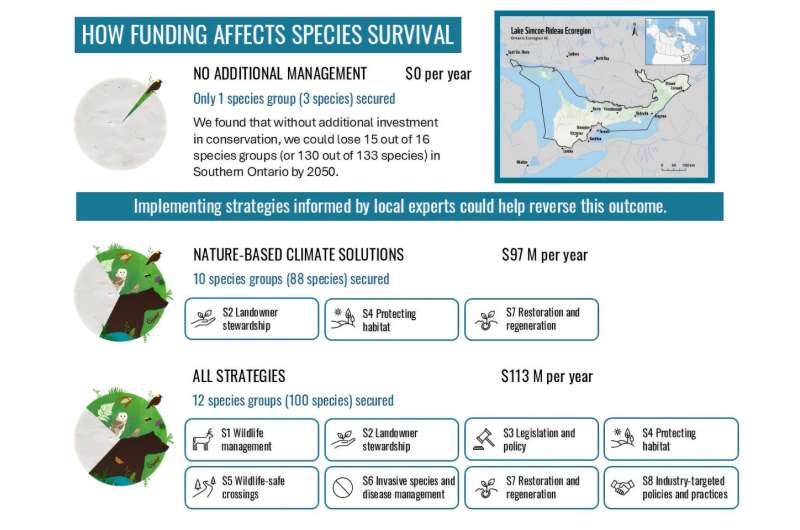A recent study reveals that 130 species in Southern Ontario face the threat of local extinction by 2050 unless immediate conservation actions are undertaken. Conducted by the University of British Columbia in collaboration with the World Wildlife Fund Canada, the research emphasizes the critical state of biodiversity in this region, where 98% of at-risk species could disappear without intervention.
The study highlights that an investment of merely $7 per Ontarian in eight targeted conservation strategies could significantly aid in the recovery of these vulnerable species, which include the black bear, the short-eared owl, and the Blanding’s turtle. The findings, published in the journal Ecological Solutions and Evidence, focus on the Lake Simcoe-Rideau ecoregion, a noted hotspot for species at risk.
If the provincial government fails to act, the research predicts that 130 of the 133 species currently in decline could vanish, impacting not only biodiversity but also Indigenous cultures tied to these species. “If Ontario continues with a ‘business as usual’ approach, these species could disappear by 2050,” stated Abbey Camaclang, a researcher at UBC’s Faculty of Forestry. “But our analysis shows recovery is possible through cost-effective strategies.”
Investing in Conservation: A Cost-Effective Approach
The study indicates that an annual investment of $113 million in specific conservation strategies—including habitat protection, wildlife management, and better management of invasive species—could help restore 100 species in the region. This funding requirement represents less than one-tenth of one percent of Ontario’s projected budget for 2024.
Researchers employed the Priority Threat Management (PTM) framework, developed by Dr. Tara Martin and her team. This tool leverages local expert knowledge to assess costs, benefits, and feasibility of various conservation actions, enabling a focus on those that yield the greatest biodiversity gains for the lowest cost.
The eight strategies identified include wildlife management, landowner stewardship, legislative actions, habitat protection, wildlife-safe crossings, and invasive species management. According to Dr. Martin, “PTM identifies how to maximize resources and outlines the funding required to give these plants and animals the best chance of recovery.”
In addition to benefiting wildlife, the proposed strategies promise to enhance water quality, protect culturally significant species, create jobs, and contribute to carbon storage. Effective habitat conservation could prevent at least 11.2 million tonnes of CO2 emissions while sequestering 137.6 million tonnes of CO2, thereby assisting Ontario in meeting its greenhouse gas reduction targets.
A Call for Legislative Action
The urgency for immediate action is underscored by concerns that existing environmental protections, such as the Endangered Species Act, are under threat. “Without new investments and strong legislation, we risk losing species like the American bumble bee, barn owl, Eastern wolf, and piping plover,” warned James Snider, Vice President of Science, Knowledge, and Innovation at WWF-Canada. He emphasized that the loss of these species would weaken ecosystems essential for community health and livelihoods.
The University of British Columbia and WWF-Canada have already applied the PTM approach to the Wolastoq watershed in New Brunswick, implementing findings to restore over 5,300 hectares of habitat and planting more than 31,000 trees and plants. “By applying PTM to the Lake Simcoe-Rideau ecoregion, we’ve identified the most effective conservation actions and their broader benefits,” Dr. Martin added.
The study serves as a crucial reminder of the pressing need for actionable conservation strategies to safeguard the future of Ontario’s rich biodiversity. As the clock ticks toward 2050, the call for immediate investment and legislative support grows ever louder.







